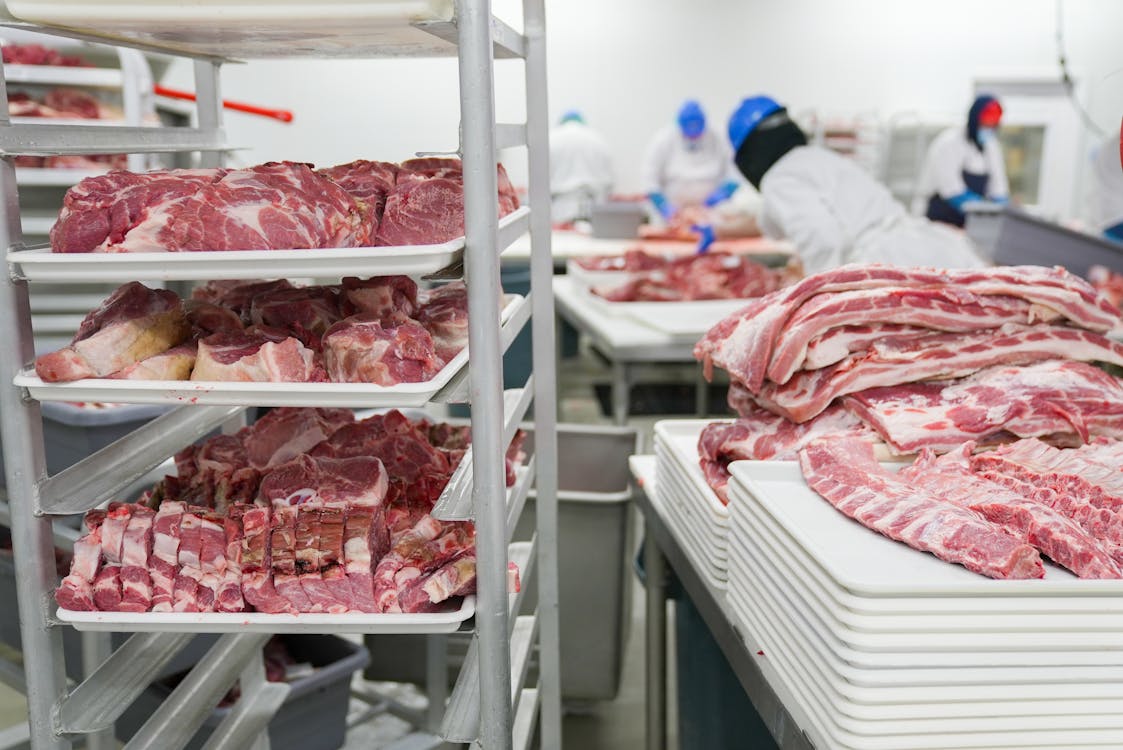As with other markets, the beef market is driven by supply and demand. When either or both move up or down, the cost of cattle moves as they react to the changes. As with other agricultural commodities, we can trace the changes in supply and demand for cattle and beef to ongoing weather phenomena, mainly the drought being experienced across the US South Plains and central regions.
There are other indicators of why the beef market has drawn the focus of investors, and we will discuss them below.
1. The Perfect Storm in Cattle Country
Table of Contents
The Central and Southern Plains in the United States are called cattle country because they are where most cattle operations are concentrated. These include packing plants, cow-calf operations, and feed yards.
The last few years have seen an unprecedented drought across these areas, leaving little pasture that cannot sustain the larger number of cattle in the region. The result is farmers taking their cattle to slaughter much earlier than anticipated.
Initially, the huge sell-off led to stable cattle and beef prices. Investors expected futures to fall, but they did not. Why? Traders have continued to buy cattle futures, growing their contracts from 20,00 in July 2022 to almost 109,000 contracts in March 2023.
2. Tightening Suppliers
A look at different reports shows that the number of cattle on feed in 2023 is far lower than it was in 2022. With lower numbers, the market has seen fewer cattle being sold or brought to slaughter. The result is depressed supplies that are tightening prices and pushing them up.
With experts saying that it will take about three years for the number of herds to return to previous levels, we can expect cattle prices 2024 to be higher, providing an excellent opportunity for investors who enter the market right now.
3. Rising Demand

2023 has seen a lot of talk about recession and inflation. Both are excellent indicators of where the market is likely to head. For example, people struggling with unemployment and high commodity prices are less likely to buy what they consider to be high-end products like high-priced beef. However, that is not what the market is seeing.
The price of choice cuts, which includes restaurant demand and high-end cuts, surged in April and March 2023. The increase left the choice market at the highest it has been since January 2022. The select market, which included products like hamburgers, also saw a surge in price, up more than $30 from the previous year’s levels.
4. Investments in Live Cattle Futures
Investors unsure about the rise in cattle prices are turning to the live cattle future market. This market allows them to speculate on the cost of cattle commodities while not investing directly in cattle rearing and related activities. With the bullish cattle run we are seeing right now, this could be an excellent option for investments looking for alternative commodity investments.
Prices in the cattle market are growing by the day, with the demand for cattle following the same trend. There are numerous opportunities for investing, with investors also able to look beyond the United States market for additional options.
- How To Create A Safe And Comfortable Home Environment For In-Home Care In Boca Raton? - July 16, 2024
- 10 Trendy Black Nail Ideas To Elevate Your Nail Game - May 6, 2024
- Getting A Free Divorce In Virginia? Here’s What To Expect - April 24, 2024





No Comments